Boiler for Underfloor heating (UFH) is becoming popular because it provides radiant floor heating that distributes heat evenly across the room. In contrast, radiators distribute heat via convection, heating the air around and above the radiator to high temperatures. This heating cycle causes most of the warmth to remain close to the ceiling. But UFH radiates heat from the floor upwards, placing most of the warmth where it is most effective. Additionally, it enables the system to operate at lower temperatures, resulting in high energy efficiency. We will look at the boiler for underfloor heating because it is a core component in the system. Let’s get started!
Understanding Underfloor Heating
Underfloor heating water systems consist of the following five primary components.
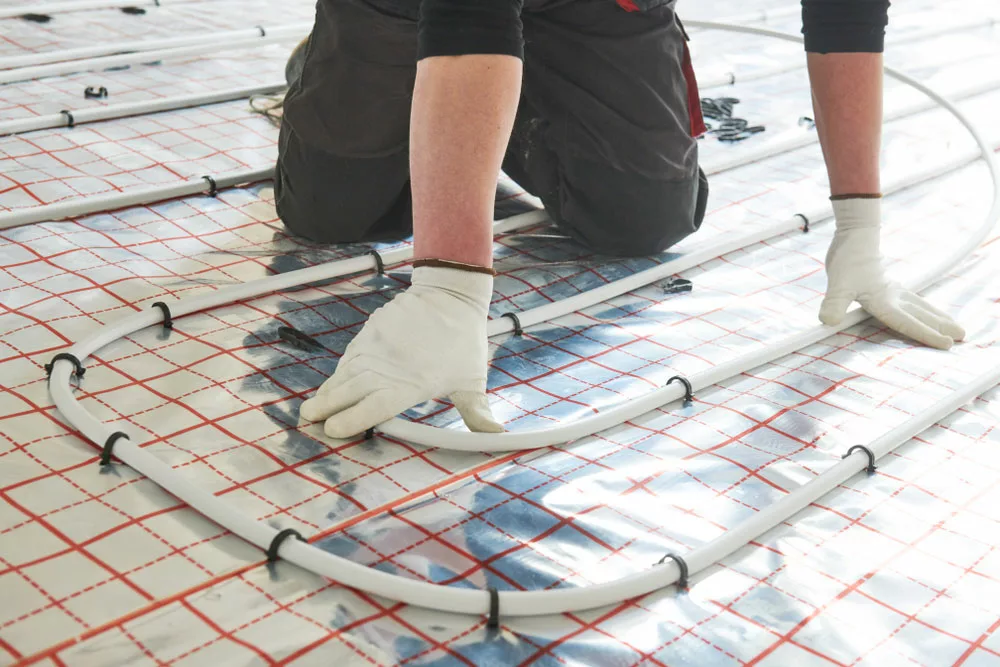
An underfloor heating installation
Thermostat
Intelligent thermostats in each room regulate the required heating. They communicate with the wiring center to signal it when you need heat.
Manifold and Underfloor Heating Control Pack
The control pack and manifold sit side by side. Hot water comes in via the control pack, which mixes it to approximately 50°C. The warm water then goes to the manifold for distribution to the pipe circuits. Manifolds feature zone actuators that control when heat is on or off.
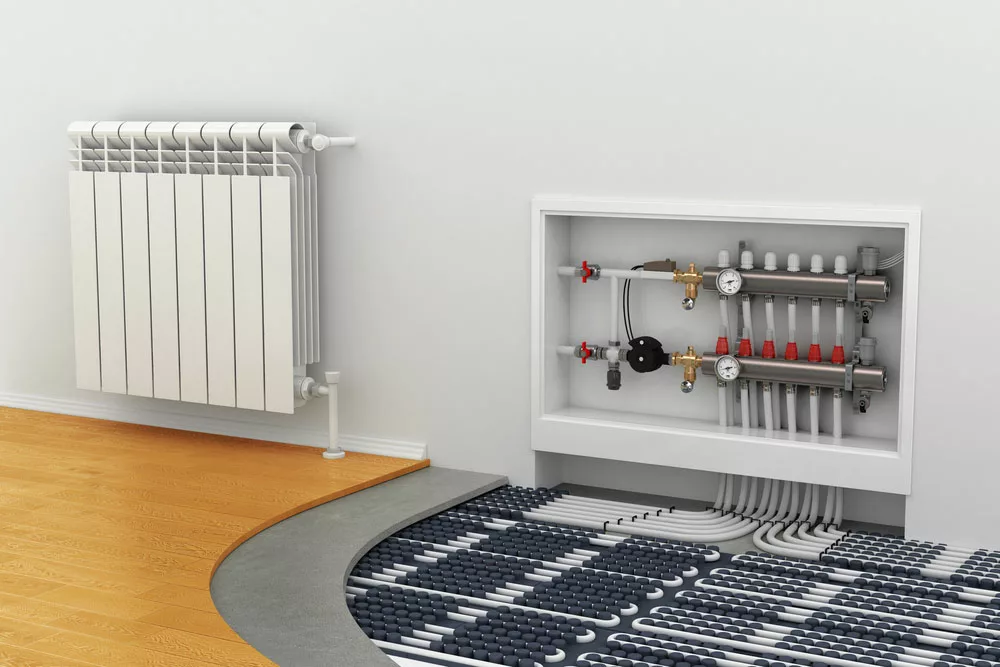
An underfloor heating system manifold and control pack
Pipe Circuits
The pipe circuits or heating pipes distribute warm water evenly across the floor, elevating temperatures to about 25-28°C.
Wiring Center
This component handles the central switching of the control pack, zone actuators, and boiler, following instructions from the thermostats. The unit controls the manifold, which turns the boiler on to send hot water to the rooms.

An underfloor heating system setup
Heat Source (Boiler)
Heat sources in most wet underfloor heating systems are boilers, and these come in several types.
Types of Boilers for Wet Underfloor Heating Systems
There is no best type of boiler for your UFH system, but some operate more efficiently than others. The boiler types include the following.
Gas Combi Boiler
Conventional gas boilers only provide hot water solutions, but gas combination boilers provide heating and hot water solutions from one unit. They run on natural gas from the natural gas grid network.
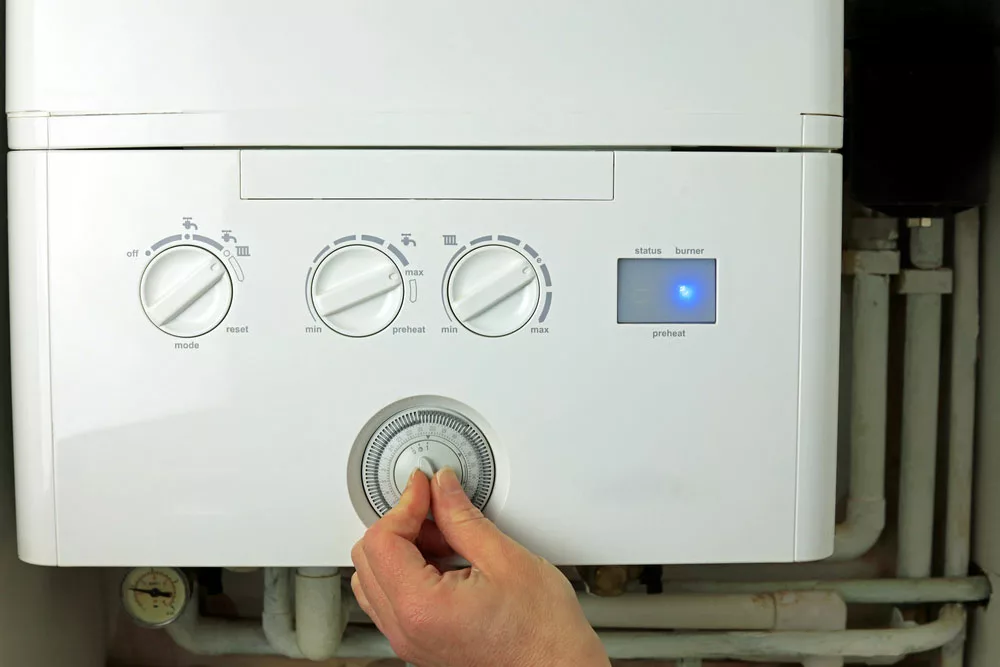
A gas combi boiler
You will need a two-port valve if the central and underfloor heating water systems use the same boiler. The valve enables the two parts to operate separately by regulating water flow into and out of the boiler to other sections of the central heating boiler systems. Without this valve, the boiler will run the two systems concurrently and might overheat.
Condensing Boiler
Condensing boilers are highly energy efficient because they recover as much waste heat as possible. Conventional boilers usually eject this heat into the atmosphere from their flue.
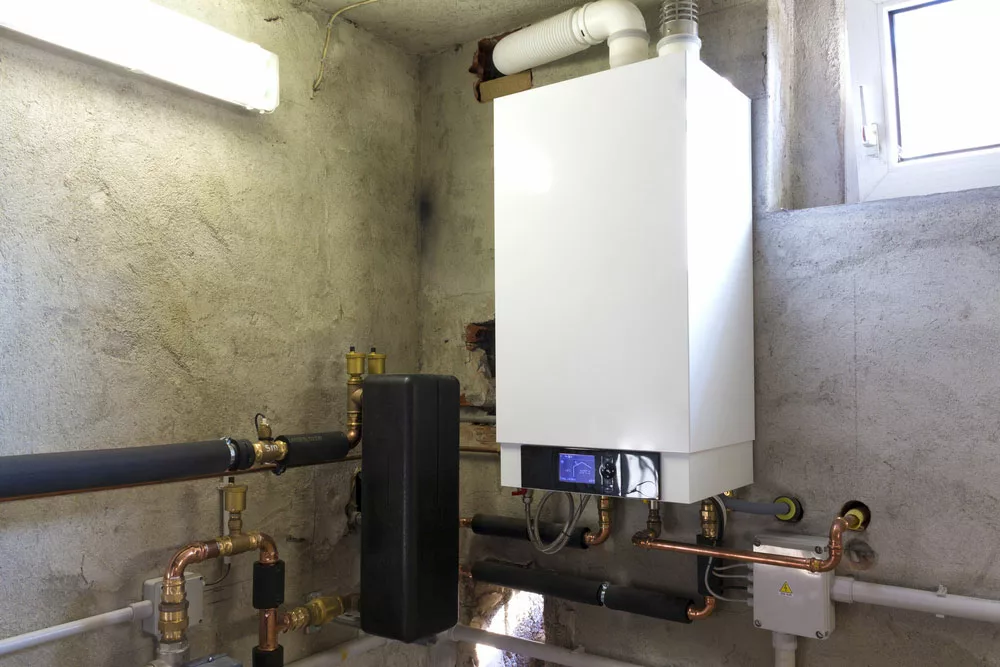
A condensing gas boiler
However, the return point of the heating system in a boiler operating in condensing mode must be lower than the dew point (53°C). So you cannot use these boilers with standard radiators because their flow temperature is 70°C and the return temperature is 60°C.
Oil Boiler
Oil boilers and furnaces are popular in remote areas that don’t have a link to the natural gas grid network. One disadvantage of oil is that it pollutes more than natural gas. However, some companies offer heating oil blended with biodiesel to make it cleaner and partially renewable.
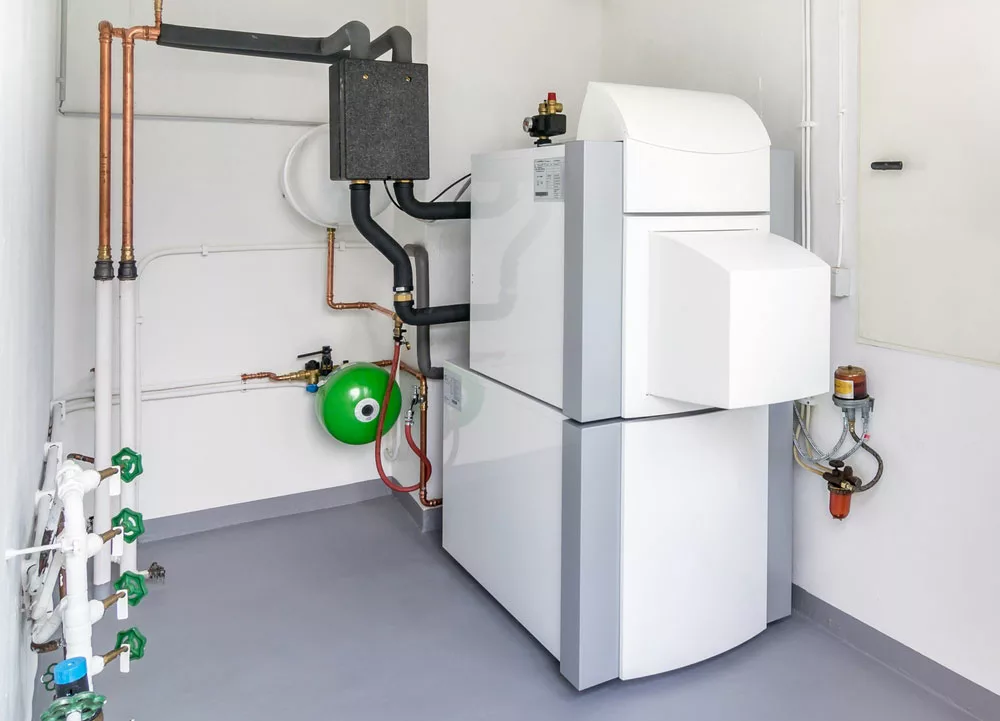
An oil boiler
LPG Boiler
Like oil boilers, their LPG counterparts use an external fuel tank to supply fuel to the furnace. LPG (Liquefied Petroleum Gas) is denser than natural gas, meaning you can store a larger quantity in a small space. So you can use this boiler in areas without the mains feed gas supply.
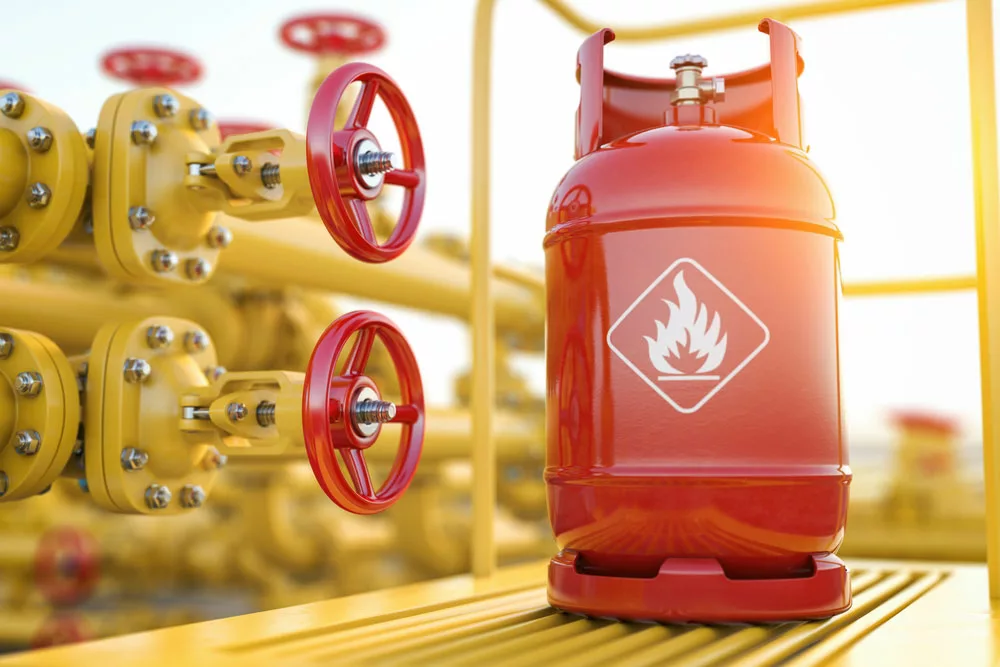
An LPG cylinder
Heat Pump
Heat pumps are not boilers. They are boiler alternatives. These units extract heat from the atmosphere around your home to heat the water under the floor. This mechanism makes them highly energy efficient, but the water might not be as hot as when using a boiler. And you might need massive heat pumps if using radiators to ensure even heating.
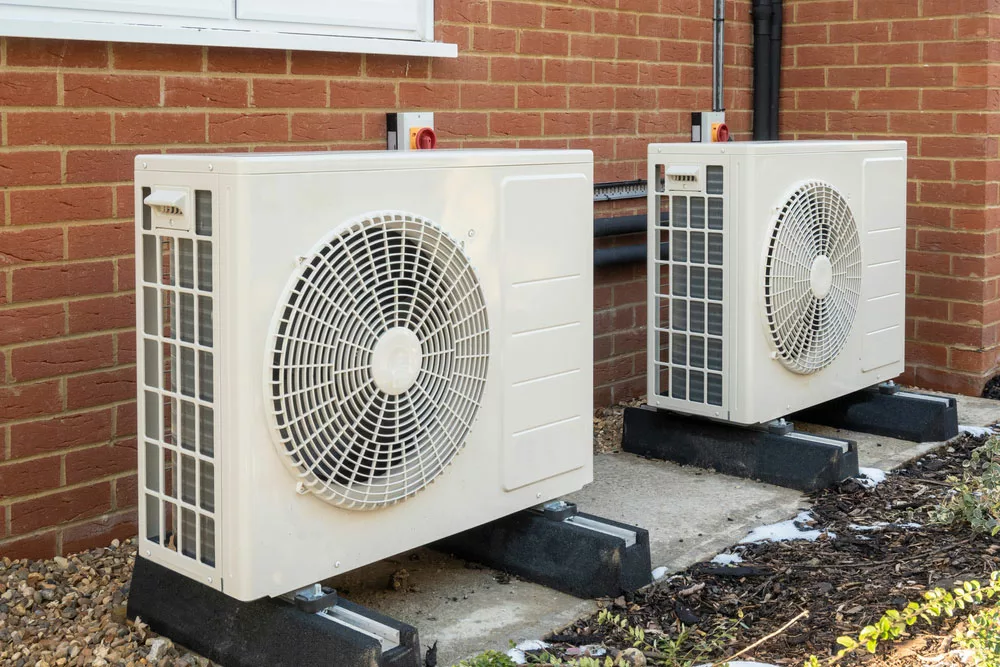
Two air source heat pumps
Underfloor Heating Boiler Requirements
The UFH setup is modular, so you can replace one component without affecting the others. Therefore, warm water underfloor heating systems can work with several boiler types, including new sustainable heat sources like heat pumps and solar thermal energy. So you can upgrade your current boiler to a more energy-efficient one in the future to reduce energy bills and cut emissions.
Types of Wet Underfloor Heating Systems
You can use boilers for the following underfloor heating systems.
Surface-Mounted Underfloor Heating
These specialist systems feature warm water pipes in insulated panels that sit above the floor finish. And they have a low profile design that raises the floor level by about 1.5 cm. They are more expensive than the buried type and can have issues after retrofitting.
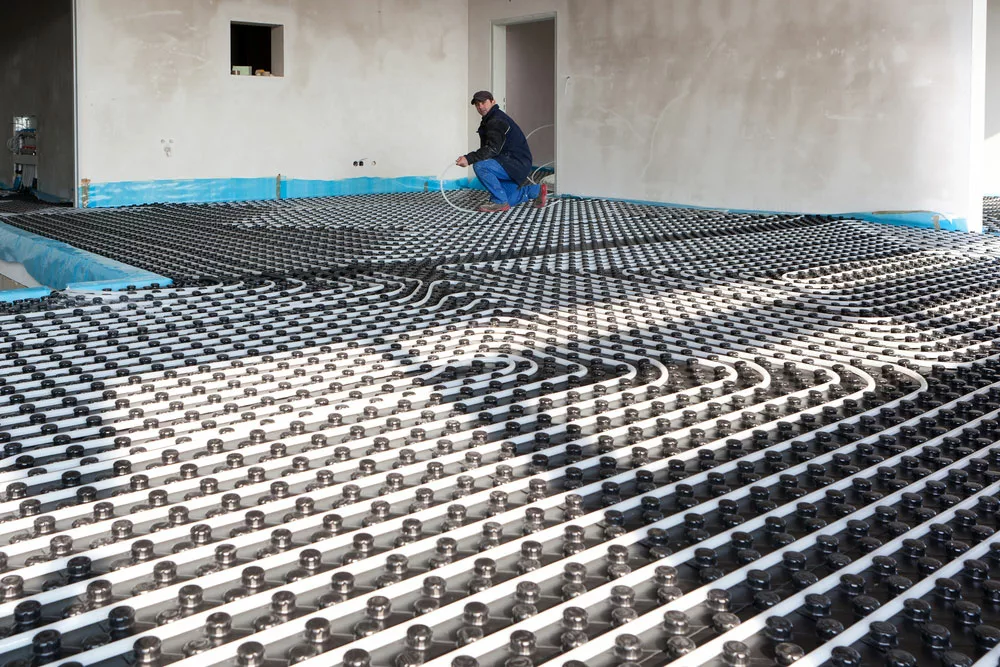
An underfloor heating system was installed in a large room
Buried Underfloor Heating
This type involves installing the pipes in the floor screed. The tubes get buried after finishing the floor screed, and you can control the different heat zones using the heating manifold. It is the most efficient water underfloor heating system but is better for new builds and extensions that require new floor screeds.
Wet vs. Electric Underfloor Heating: Which is Better?
Wet and electric systems are the most typical for UFH, and they have several differences.
Electric UFH involves installing cables or mats under the floor to provide radiant heat. These mats and cables have low installation costs, and setting them up is not complicated. So they are ideal for renovation projects or small rooms. However, the running costs are higher than wet underfloor heating.
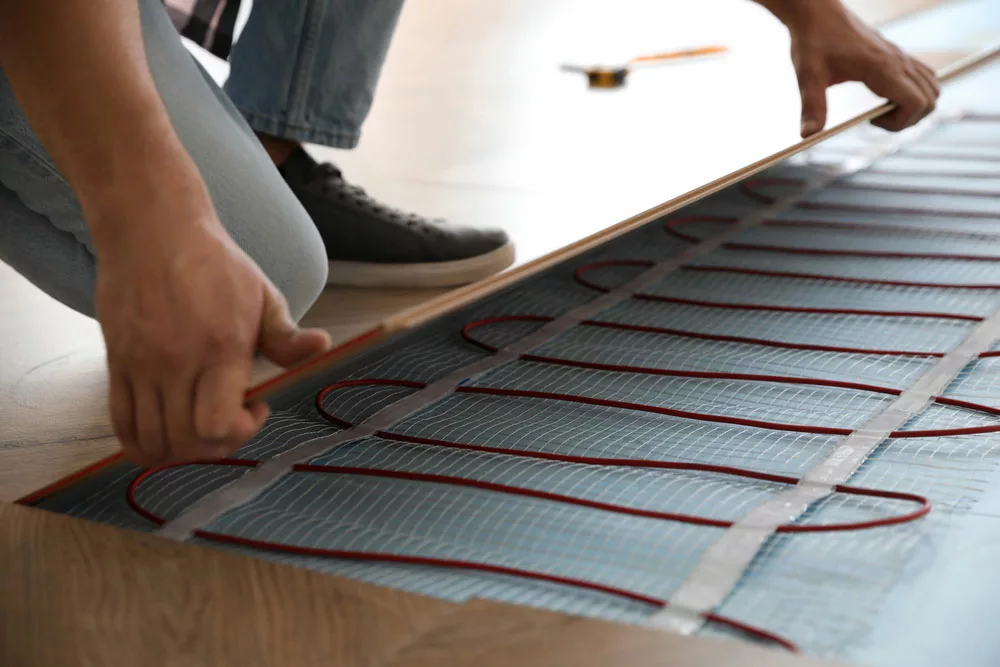
Electric underfloor heating systems. Note this system has heating elements, not pipes.
On the other hand, warm water UFH is more complicated, expensive to install, and requires more time to set up. So it is not ideal for renovation projects but is perfect for new projects and large areas. And the running costs can be up to three times lower than electric UFH. So the wet type is better in the long run.
Wrap Up
In conclusion, boilers are core components of UFH systems and are available in several types to suit different applications. You can switch between various boilers to suit your needs or lower energy bills. Ultimately, the more efficient, cheaper, and less polluting it is, the better. That’s it for this article. If you have any questions or feedback, contact us, and we’ll get back to you asap.
